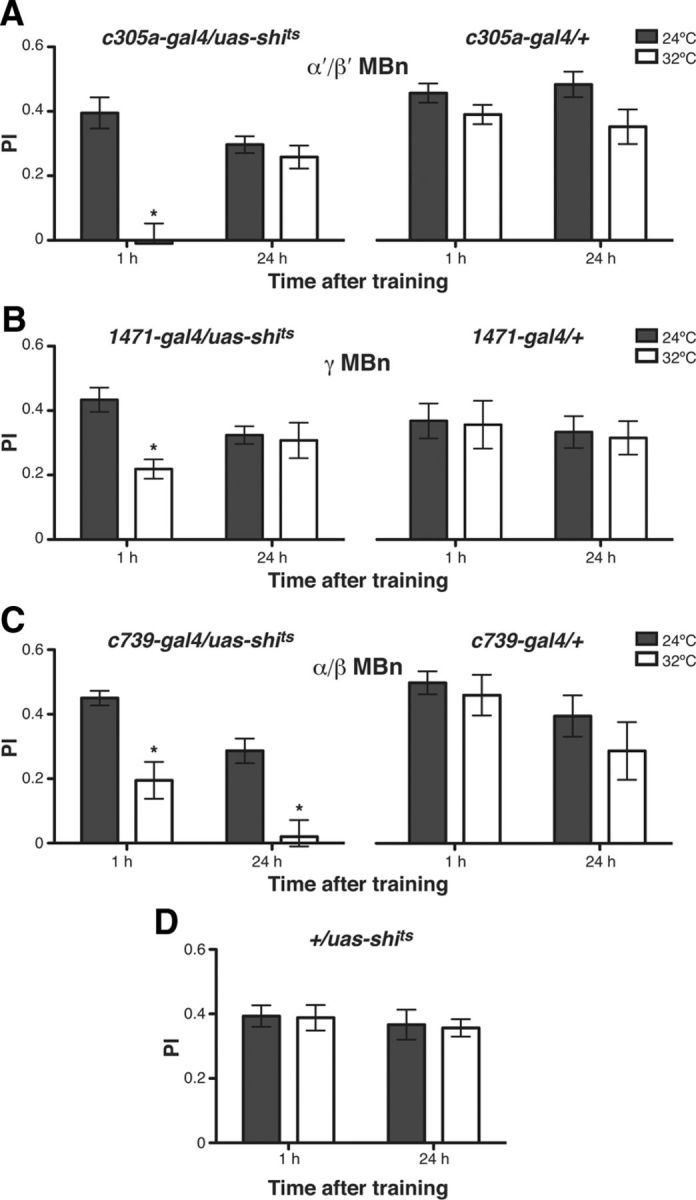Figure 3.

Time requirements for synaptic output from MBN subsets for the retrieval of appetitive olfactory memory is odor independent. A, All flies were conditioned using an appetitive unconditioned stimulus at 24°C and shifted to 32°C 10 min before a retrieval test. Conditioned odors used were Ben and Mes. A synaptic blockade imposed by the expression and activation of shits in the α′/β′ MBNs significantly reduced memory expression at 1 h but not 24 h after training (Mann–Whitney pairwise comparisons, p = 0.0022 and p = 0.3776, respectively). No significant difference was observed between permissive and restrictive temperatures for control flies carrying only the c305a-gal4 element (Mann–Whitney pairwise comparisons, p ≥ 0.0649). B, Synaptic blockade of γ MBNs significantly reduced 1 h but not 24 h appetitive olfactory memory expression (Mann–Whitney pairwise comparison, p = 0.0135 and p = 0.6304, respectively). No significant difference was observed between permissive and restrictive temperatures for control flies carrying only the 1471-gal4 element (Mann–Whitney pairwise comparisons, p ≥ 0.7483). C, Synaptic blockade of α/β MBNs significantly reduced appetitive olfactory memory expression during retrieval at 1 and 24 h after training (Mann–Whitney pairwise comparisons, p ≤ 0.0081). No significant difference was observed between permissive and restrictive temperatures for control flies carrying only the c739-gal4 element (Mann–Whitney pairwise comparisons, p ≥ 0.4848). D, No significant difference was observed between permissive and restrictive temperatures for control flies carrying only the uas-shits element (Mann–Whitney pairwise comparisons, p ≥ 0.8182). Asterisks indicate a statistically significant difference assessed by Kruskal-Wallis analysis followed by Mann–Whitney pairwise comparison (n = 6 for each group).
